
Karelin: Avalanche is a myth
Vladislav Karelin
In early February 1959, a group of hikers led by Igor Dyatlov died under mysterious circumstances on the slope of Mt. Kholat Syakhl in the Northern Urals. For spending the night, they set up a tent on a bare mountainside, well above the forest boundary (see Figure 1).
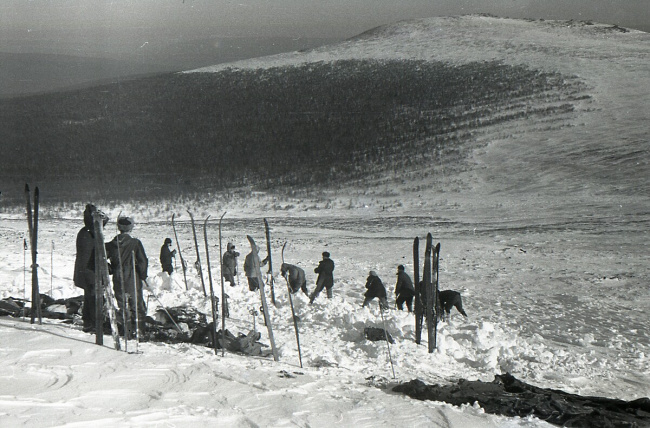
Figure 1. Location of the tent on the mountainside, 1959 (V. Brusnitsyn)
For a still unknown reason, they cut the side of the tent from the inside and fled half naked. Then along the slope, crossing open stone ridges and snow-covered fields, they descended into the forest, where they froze. The search started only in the third decade of February. On February 26, a tent was found in which there were no people. I, as a participant in this operation, perfectly remember the tension of those days. On February 27, the bodies of four hikers were found. A few days later, another person was discovered. And four more corpses were found only on May 4th.
Three weeks later, the criminal case on the death of the hikers was dropped. Lev Ivanov, the criminal prosecutor who conducted the investigation, in the decision of May 28, 1959 on the termination of the criminal case, wrote: "... it should be considered that the cause of the death of the hikers was an overwhelming force, which the hikers were not able to overcome."
What was the real nature of the "overwhelming force"? For more than six decades, the relatives of the deceased hikers and the public have been trying to find an answer to this question. Many theories have been put forward for the cause of death of the hikers.
At the beginning of 2019 the prosecutor's started reviewing the criminal case conducted in 1959. The results of the inspection have not yet been made public. Nevertheless, on June 11, 2020 Andrey Kuryakov, the head of this prosecutor's investigation, held a press-conference in the editorial office of the newspaper "Komsomolskaya Pravda" and revealed to the public some of the results of the investigation. Kuryakov believes that the main reason for the death of the hikers is an avalanche on the tent of the Dyatlov group. He explains his decision on the avalanche on the basis of a trace examination carried out by E.V. Baranov at the federal budgetary institution "Ural Regional Center for Forensic Expertise of the Ministry of Justice of the Russian Federation".
The investigator believes that the only sign of an avalanche on the tent is the simultaneous collapse of the rear pillar and the breakdown of the rear braces, the cause of which "could be some kind of blow from top to bottom a little obliquely, including as a result of the descent of the snow mass". Lets follow the course of reasoning of the investigator that led him to this conclusion.
Beforehand, I want to state the following. The real condition of the tent, discovered on February 26, 1959, was seen only by two searchers - Boris Slobtsov and Mihail Sharavin. They cut the dense snow lying on top of the tent with an ice pick and examined the items inside. On February 27, a group of searchers also examined the tent. Georgiy Atmanaki, a member of this group, wrote down in his testimony: "... cleared off the snow and lifted the lodged sidewall, carefully lifted the blankets and quilted jackets... Examined the contents... having first raised the tent and pulled out three pairs of skis...". Thus, the position of the tent and the things inside was twice contaminated. And subsequent searchers saw a slightly modified state of the tent.
- 2 -
The tracing expert believes that "... The tent from the southern side, from the side of the entrance, was held on a spacer (stick), the stretchers were intact." One should agree with this opinion of the expert. Indeed Boris Slobtsov in his testimony of 04/15/1959 said: "... the entrance to the tent protruded from under the snow ...". Mihail Sharavin was not questioned by the investigator, but in answers to questions he said: "... Only one entrance was visible ... only the front pole stood vertically." Similar opinions were expressed during interrogations by other searchers (Aleksey Chernyshev, Vadim Brusnitsyn). According to my personal observation, the southern entrance ridge of the tent was on a ski pole, the lower part of which was covered with snow and was located outside the tent (see Figure 2).
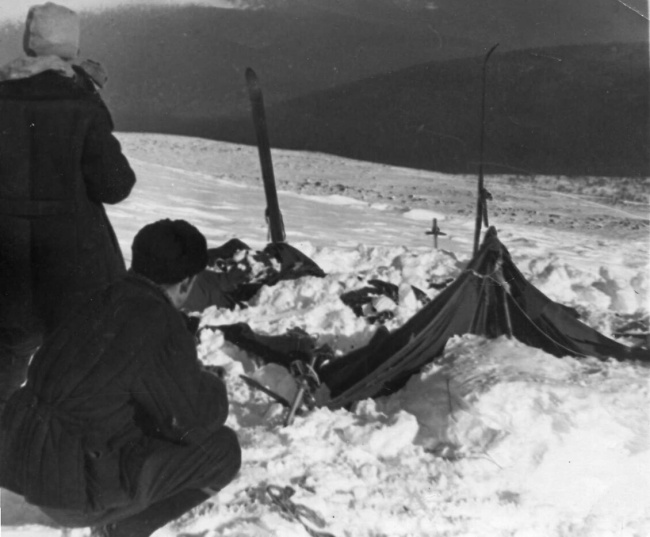
Figure 2. The tent on February 28, 1959, (Vadim Brusnitsyn)
Referring to this photo of the tent, the expert quite rightly concluded: "The near pole from the side of the entrance is standing." Along the way, I note that the author of this article, in a sheepskin coat, with a protruding wind jacket hood and an army cap on his head, stands with his back to the photographer (Vadim Brusnitsyn). And Boris Slobtsov squatted in a quilted jacket (for comparison, see Figure 3, on which the jacket on Slobtsov can be clearly seen - the second from the right - and which is also visible in Figure 2).
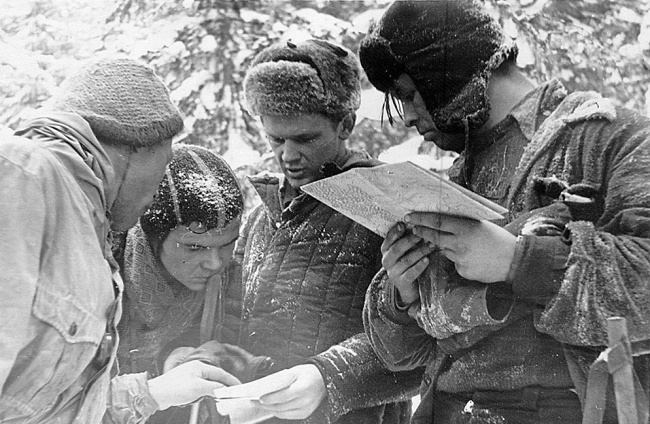
Figure 3. Searchers 1959 (Vadim Brusnitsyn)
The situation with the rear ridge rack is much more complicated. According to the expert, "... the far pole (from the side of Otorten) fell over". Mihail Sharavin described of the back pole in similar words: torn down, dropped. Such words only describe the condition of the rear pole, imply the presence of a pillar, but do not characterize the degree of damage, collapse, dropping of it: either the rack fell to a horizontal position, or it only bent over at some angle.
However, in his testimony Aleksey Chernyshov noted: "... The other [northern - Karelin's note] end [of the tent - Karelin's note] was also propped on a pole." According to my personal observations, a ski pole under the northern ridge took place outside the tent. It was connected to the northern ridge of the tent for supported and was tilted towards the tent. But at the same time, the rear pillar did not fall completely and was not in a horizontal position. Such a tilted state of the rear ridge of the tent is also visible in the photograph. In the far part of the tent, to the left of the standing ski, you can see the corner of the far ridge of the tent. And the far stand itself, of course, is not visible due to the angle of photography. But the actual presence of a tilted pole confirms Aleksey Chernyshov's and my personal observation. In addition, the presence of not fallen to a horizontal position, but only tilted rear pole indirectly confirms what the searchers said:
- Slobtsov in his testimony said that «the middle [of the tent - Karelin's note] fell down";
- Lebedev in his testimony said that "the middle of the tent fell through".
- 3 -
From these testimonies it follows that the middle of the tent was below both of its skates, supported by poles. At the same time, the southern, entrance pole was in an upright position, and the northern one was bent over. Thus, it should be noted that the investigative expert incompletely and somewhat inaccurately assessed the condition of the rear ridge post, which, according to the expert collapsed, but in reality only tilted towards the tent.
Further, the expert asserts that the breakdown of the rear stretch ropes of the tent may have occurred as a result of the collapse of the rear pole..., which means that the collapse of the rear pole and the breakdown of the rear stretch ropes occurred simultaneously."
This expert conclusion is surprising. In my personal experience of numerous overnight stays above the forest line, both in winter and summer conditions, until the rear tent wires are torn off, the rear ridge post will stand supported by the stretch ropes. A change in the verticality of the rear ridge pole can occur only in the event of a breakdown of any of the rear stretch ropes, provided that the stretch ropes on the side of the entrance of the tent are not damaged condition. Figure 4 shows a top view of the rear of the tent. Consider the possible options for disrupting the condition of the rear pole.

Figure 4. Layout of the back of the tent
Legend: 1-4 - left stretcher, 3-6 - right stretcher,
2-5 – ridge stretcher, 2 – rear ridge pole
If there was a breakdown of the left stretcher 1-4, then the ridge pole will instantly fall to the right, towards the right slope of the tent with stretchers 3-6.
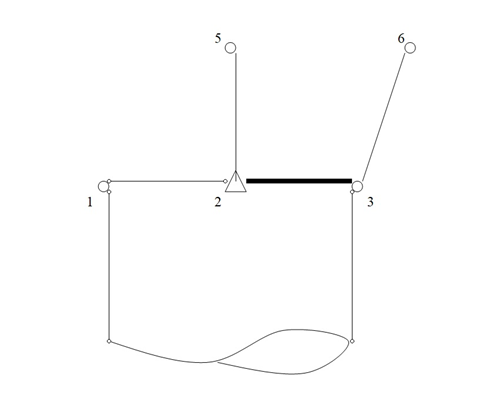
Failure of the left stretcher 1-4
If there is a breakdown of stretcher 3-6, then the ridge pole will instantly fall to the left, towards the left slope of the tent with stretcher 1-4.
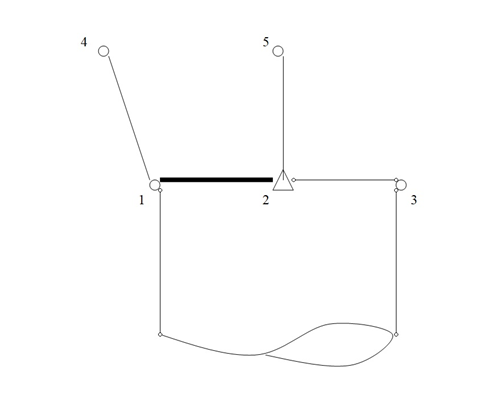
Failure of the right stretcher 3-6
If there is a breakdown of the ridge stretcher, then the ridge pole will instantly fall to the side of the tent.

Failure of the ridge stretcher 2-5
If both side stretchers 1-4 and 3-6 are torn off at the same time, then the ridge pole will instantly fall either to the right or to the left.
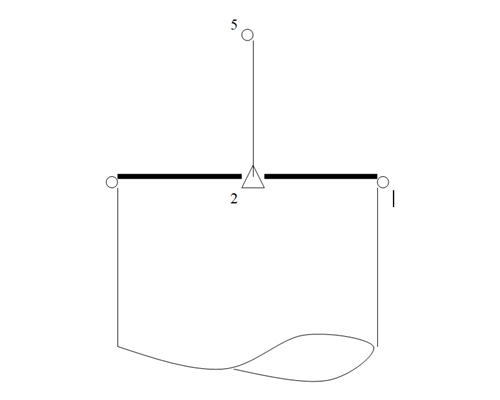
Failure of the left 1-4 and right 3-6 stretchers
- 4 -
When one or more stretchers are broken, the state of the ridge pole instantly changes. The simultaneous breakdown of any stretcher and the fall of the ridge pole at the same time is a mechano-geometric axiom that has nothing to do with an avalanche. In any case, the breakdown of the stretcher is primary, and the fall of the ridge pole is secondary. Even in conditions where, in the opinion of the expert, there will be a blow of the snow mass on the back pillar, the stretcher will first be torn off and only after that the back pillar can collapse. Here, the expert mistakenly reversed the cause (breakdown of the rear stretcher) and the effect (fall of the rear pole): the breakdown of the stretcher is always primary (cause), and the fall of the ridge pole is secondary (consequence). Thus, the only argument of the expert, about the simultaneous breakdown of the rear stretcher and the pole, as a sign of an avalanche, does not stand up to criticism and therefore is erroneous.
Further, the expert states that "the cause of the collapse of the rear post of the tent could be some kind of blow from top to bottom, a little obliquely, including from the descent of the snow mass." This expert opinion is conjectural and is not substantiated by anything. The expert did not cite a single fact confirming the existence of a blow to the rear pillar "including from the descent of the snow mass". Therefore, the final conclusion made by the expert about the avalanche has no legal proof. But the absence of an avalanche (impact of a snow mass) is confirmed by the following facts. If an avalanche had occurred, then the tent could have been moved, but in fact the tent remained in its original place, as evidenced by the ski poles preserved in their places, to which the stretchers were tied. The avalanche could come down in a direction perpendicular to the longitudinal axis of the tent. Therefore, if there was an avalanche, then the rear ridge post should be knocked down to the right. In fact, she leaned over the tent. Medical researchers argue that when people are in a tent during an avalanche it is impossible to get injuries that are actually found on some corpses. These facts clearly indicate the absence of an avalanche.
According to the expert, the cause of the breakdown of the lateral stretchers could be the impact of the snow mass. But the breakdown of stretchers can occur for other reasons. Sometimes gusts of wind are the cause of the tearing of stretchers. They gradually break the strength of the tie of the rope on the pole (peg), and also loosen the pole (peg) directly, which ultimately can lead to the breakdown of the stretcher. Another reason for the breakdown of the stretcher can be the careless actions of a person outside the tent, who can accidentally trip over the stretch line and rip it off. Another reason for the breakdown of the stretcher can be the vigorous body movements of people inside the tent, which, due to the vibrations of the fabric of the tent, can simply pull off the stretcher from a pole or the pole itself, fixed in the snow. Finally, blizzard snow can be the cause of the breakdown of the stretcher too. It gradually accumulates and falls on the rear end of the tent, strains the stretchers and can cause their breakdown.
So we have several possible reasons for the failure of the rear stretcher:
- A blow from top to bottom of a snow mass (avalanche) according to the opinion of an expert,
- Gusts of wind,
- Careless actions of a person outside the tent,
- Intense actions of people inside the tent,
- Accumulation of snow due to a snowstorm.
The least likely reason for the failure of the stretchers is due to an avalanche, since the searchers who saw the condition of the tent on February 26-27, 1959, unanimously deny noticing any traces of an avalanche. But the searchers amicably confirm the presence of stretchers and a vertically standing pole from the side of the entrance to the tent. In addition, I note that the poles on the back of the tent were preserved in their places, to which the rear stretchers were tied (one of them is visible in Figure 2). Hypothetically, it can be assumed that the avalanche could have descended on the tent under some set of conditions (slope angle, snow depth, snow structure, etc.). But the absence of traces of an avalanche and the above factual data denying an avalanche, allow us to conclude that the probability of an avalanche is becoming an insignificant myth. The possibility of an avalanche is by no means a confirmation of the reality of an avalanche.
The likelihood of the possibility of breaking the rear stretchers due to strong gusts of wind is also small. Microclimatic examination showed that on the night of February 1-2, 1959, the wind speed in the area of the tent was 9.0-10.2 m/s. In such conditions, the stretchers at the entrance to the tent were not torn off. Therefore, we can assume that the possibility of breaking the rear stretchers due to gusts of wind is unlikely.
Some researchers of the tragedy of the Dyatlov group believe that before the dramatic moment when they left the tent, one person (possibly Zolotaryov) was outside the tent. While inspecting the tent, he could have tripped and tore off the rear stretcher, which inevitably should lead to a change in the position of the rear pole. From a fundamental point of view, such a situation is quite possible, but only if there is unequivocal proof that one person was outside the tent.
Activities inside the tent, as an impulsive reaction to the influence of some external force, expressed in cutting the right slope of the tent and leaving through the cuts from the tent, could well have resulted in the breakdown of the rear stretcher.
The accumulation of snow due to a snowstorms by the rear wall of the tent to some critical state could also lead to the breakdown of the rear stretchers. The longitudinal axis of the tent was located approximately in the south-north direction. Microclimatic examination determined that during the tragedy a northwest wind was blowing. Therefore, the wind blew blizzard snow at an angle onto the rear end and left walls of the tent. Snow that builds up in front of the rear end wall of the tent puts pressure on the rear wall, thereby tightening the rear stretchers. And when a certain critical mass of blizzard snow is reached, the rear stretchers can be torn off. Proof of such a mechanism for breaking the rear stretchers and disrupting the verticality of the rear pole is the inclination of this pillar, noticed by some searchers (see above) when examining the tent.
- 5 -
If it were not for the mass of snow by the rear wall of the tent, the rear pole would have fallen on the tent to a horizontal position if any of the rear stretch ropes were broken. But the rear pole only leaned over the tent. The reason for this, most likely, was the fact that this pole was already in a mass of blizzard snow that wrapped around the pole along its entire diameter and part of the height, which did not allow the rear pole to fall to a horizontal position: the pole is not fallen, but only inclined. Thus, inclination of the rear pole indicates the presence of a mass of blizzard snows in by the rear wall of the tent, which is quite realistic for the conditions in the area at the time of the tragedy.
Based on the above, we can assume that the most probable possibility of breaking the rear stretcher and the inclination of the rear pole are due to two reasons: the accumulation of a mass of snowstorm snow by the rear wall of the tent and intensive body movements of people inside the tent after exposure to some external force. Most likely, both of these reasons were present. The mass of snowstorms by the rear wall of the tent put the rear stretchers in a very tense state, but not critical for breaking them. And the subsequent swaying of the tent due to the actions of the hikers inside the tent easily tore off the rear stretchers, which were already near critical stress.
One more significant point should also be noted. The tent of the Dyatlov group had a great length - 4.33 m (14 ft). When pitching such sizable canvas, hikers usually used stretchers in the middle, tying them to trees or adding additional stretch ropes(see Figure 5 for an example).
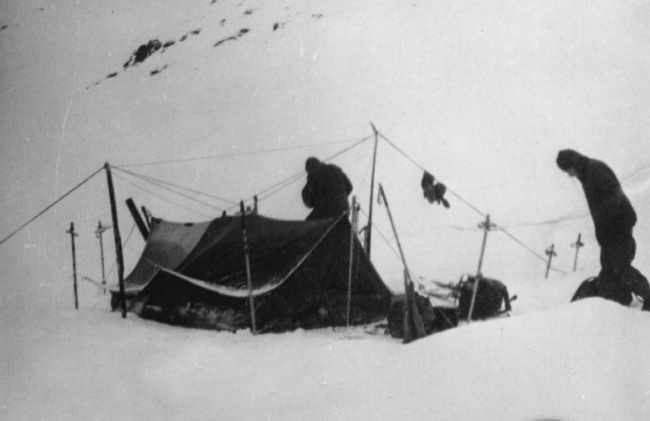
Figure 5. Tent with stretchers in the middle 1958
In the latter case, the middle stretcher was attached to the middle of the side along the length of the tent, and then, through a ski, stuck into the snow almost vertically, the stretcher was attached to a ski pole stuck in the snow. These middle stretchers were attached to each side of the tent. In the specific situation associated with the tragedy of the Dyatlov group, the middle stretchers were not installed. How could the lack of stretchers in the middle affect the stability of the rear stretches and pole? Most likely, due to the blizzard, a snow mass was accumulated on the left wall of the tent, which pulled the sides and ridge of the tent. And the stress from this tension was added to the effect of the snow mass on the rear wall of the tent, which could contribute to the breakdown of the rear stretchers. Therefore, the piling of a snow mass from the snowstorm on the left side of the tent could also be an additional stressing factor for the breakdown of the rear stretchers and sagging of the middle part of the ridge of the tent.
The above analysis allows us to draw the following conclusions.
- The track examiner mistakenly thinks that the collapse of the rear stretchers occurred as a result of the collapse of the rear ridge pole. But in fact, on the contrary, it is the breakdown of any rear stretcher that instantly causes the pole to lean. Here the expert reversed the cause and effect.
- The expert mistakenly considers the simultaneous breakdown of the rear stretcher and the collapse of the rear pole as evidence of a blow from above from a snow mass, i.e. avalanche. In reality, the breakdown of any rear stretch causes an instant change in the vertical position of the ridge pole: this is an axiom that has nothing to do with an avalanche.
- The expert considered the issue of the collapse of the rear pole too narrowly, citing only one possible reason - an avalanche. In fact, there are several other possible reasons for the collapse of the rear pole (see above), the analysis of which shows that the most likely cause of the collapse of the rear pole is the combined effect of snow accumulation by the rear and left side walls of the tent and intense actions of people under the canvas. And the likelihood of an avalanche on the tent with a rupture of the rear stretchers is negligible, a myth, since it is not supported by facts and is denied by the factors and witnesses mentioned above.
- The expert overlooked the absence of middle stretchers in the specific conditions of setting up the tent on a mountainside above the forest line. Stretchers in the middle were included in the structure of the tent. But on the evening of the tragedy, the middle stretchers were not used, due to which the chances of the rear end of the tent falling off and the sagging of the middle part of the ridge of the tent increased.
- It is extremely surprising that the group of prosecutors conducting an inspection of the 1959 criminal case under the leadership of Andrey Kuryakov did not analyze in depth the erroneous examination of the investigative expert and in their conclusions mistakenly called the avalanche on the tent the main reason for the death of the Dyatlov group. Andrey Kuryakov, as a private lawyer, said that the investigation is closed, full stop. My analysis above shows that, in fact, the full stop is inappropriate, and ellipsis and a big question mark should follow his announcement.







